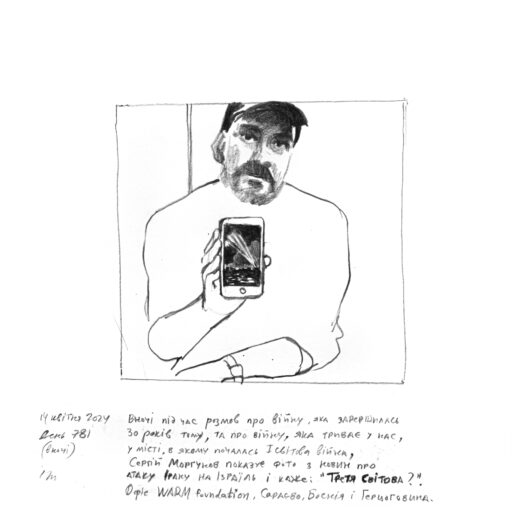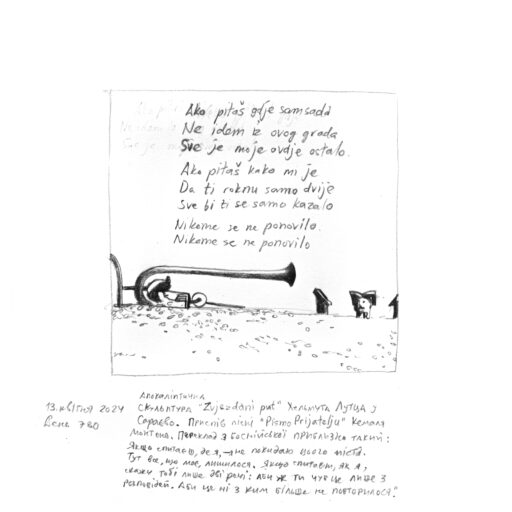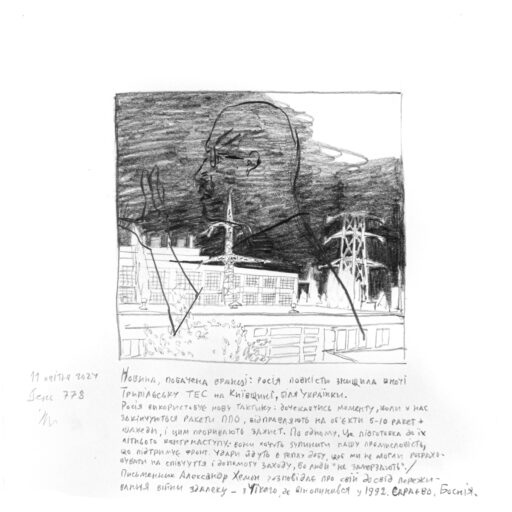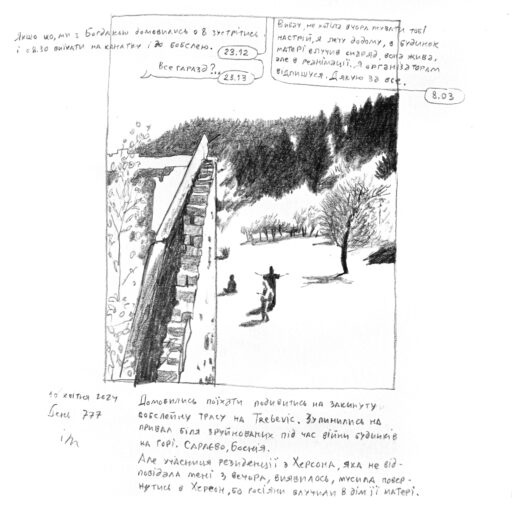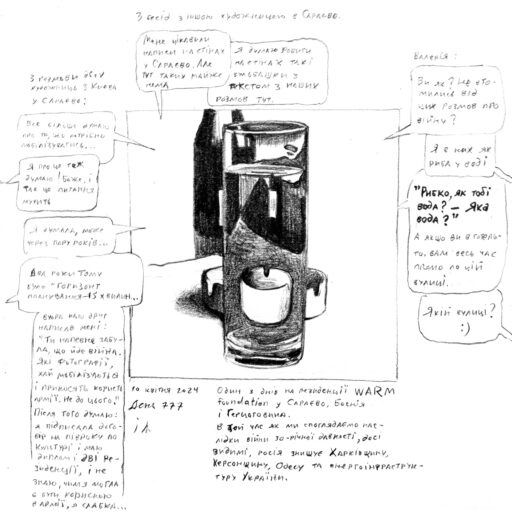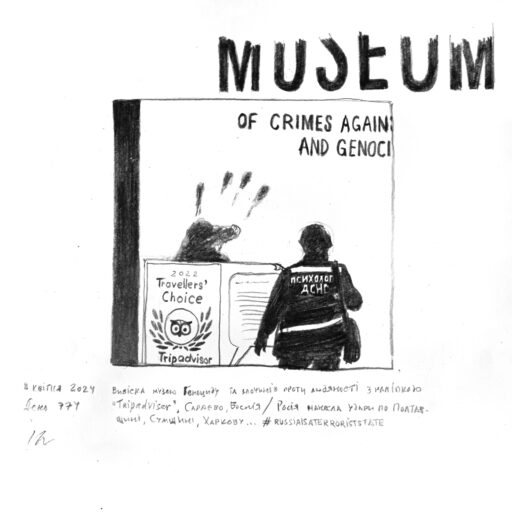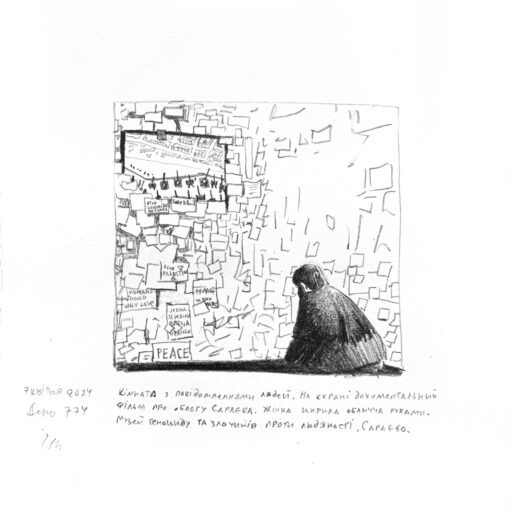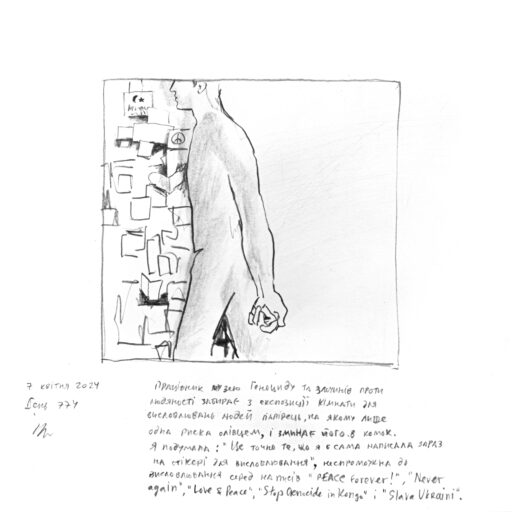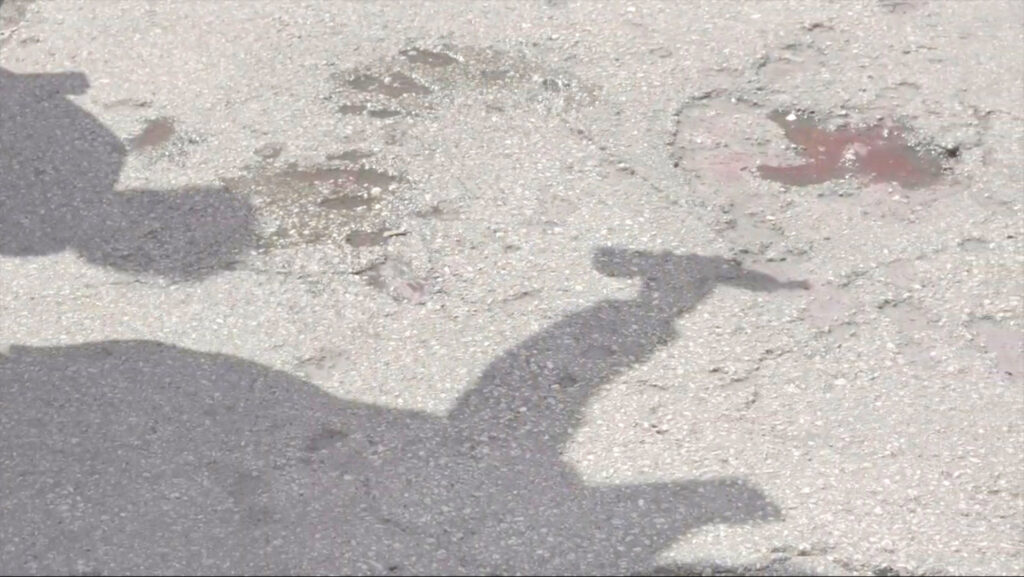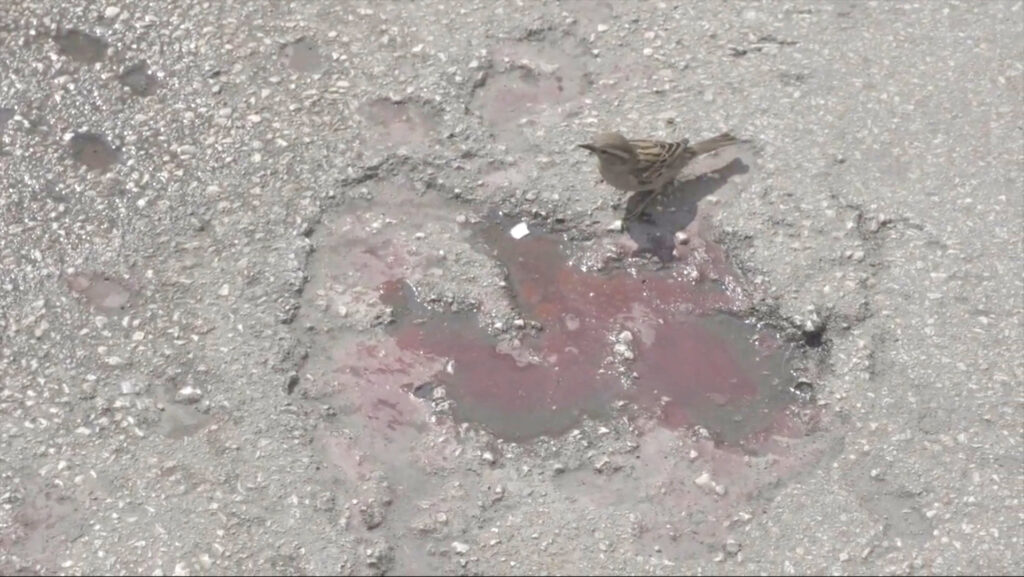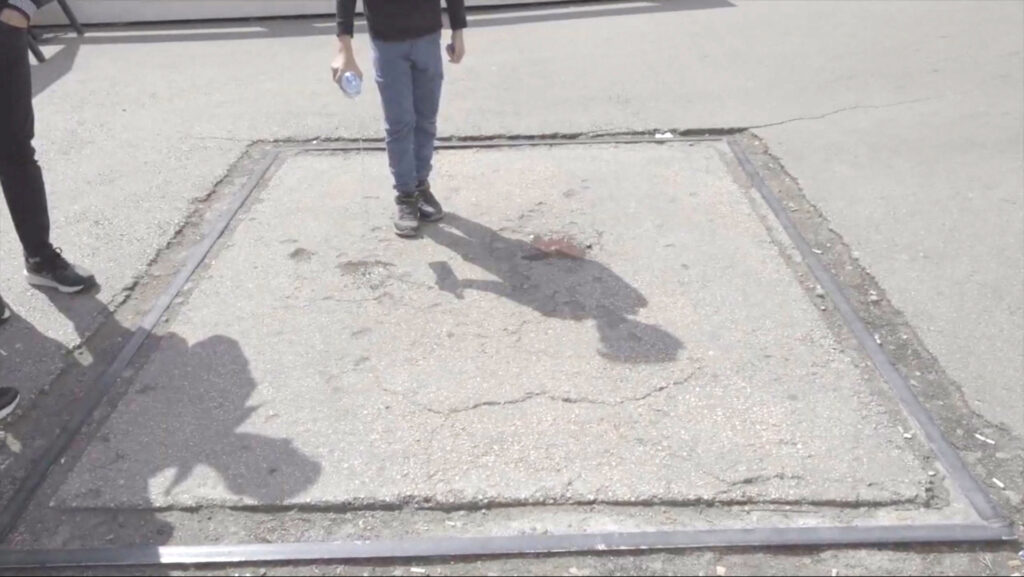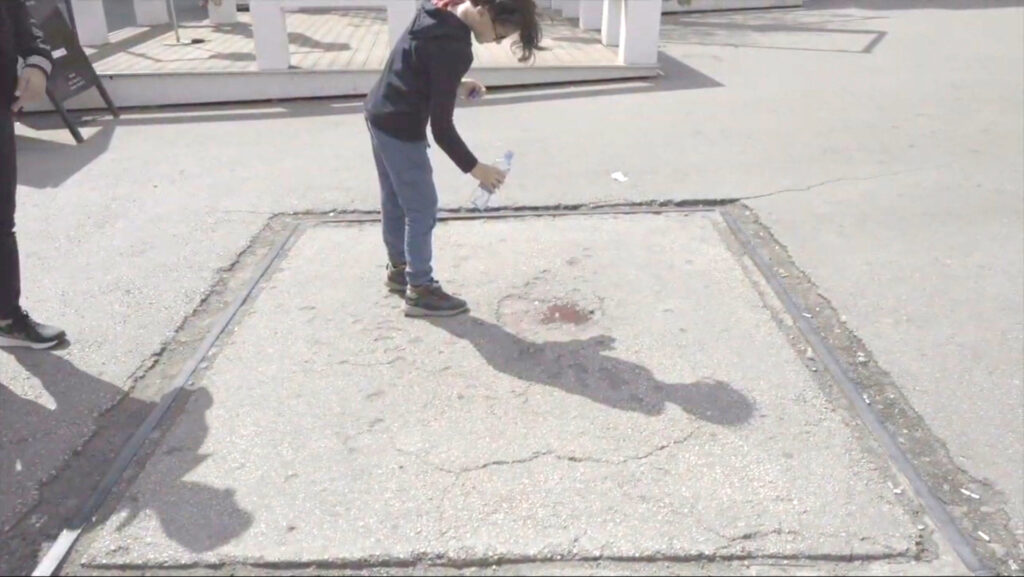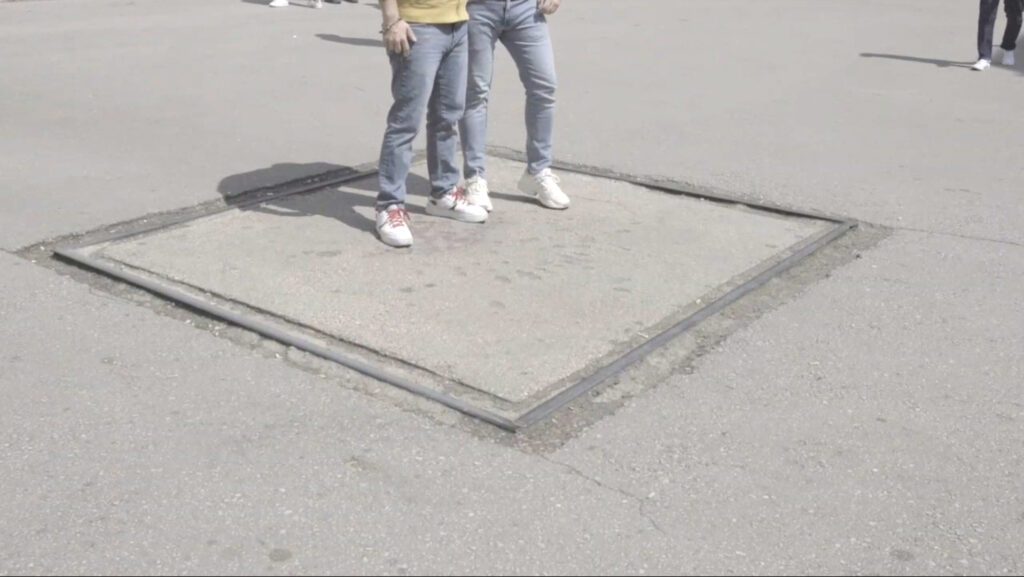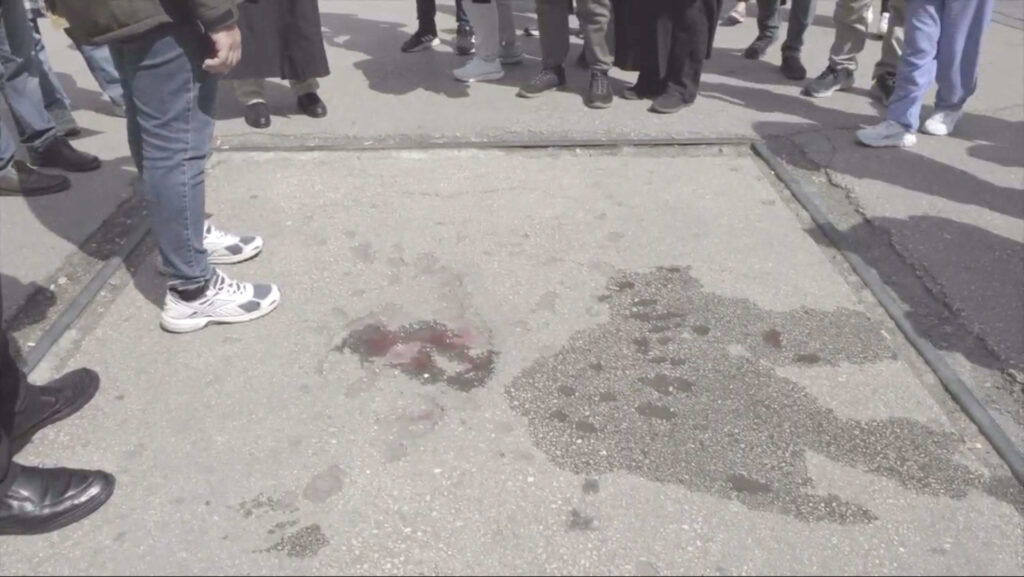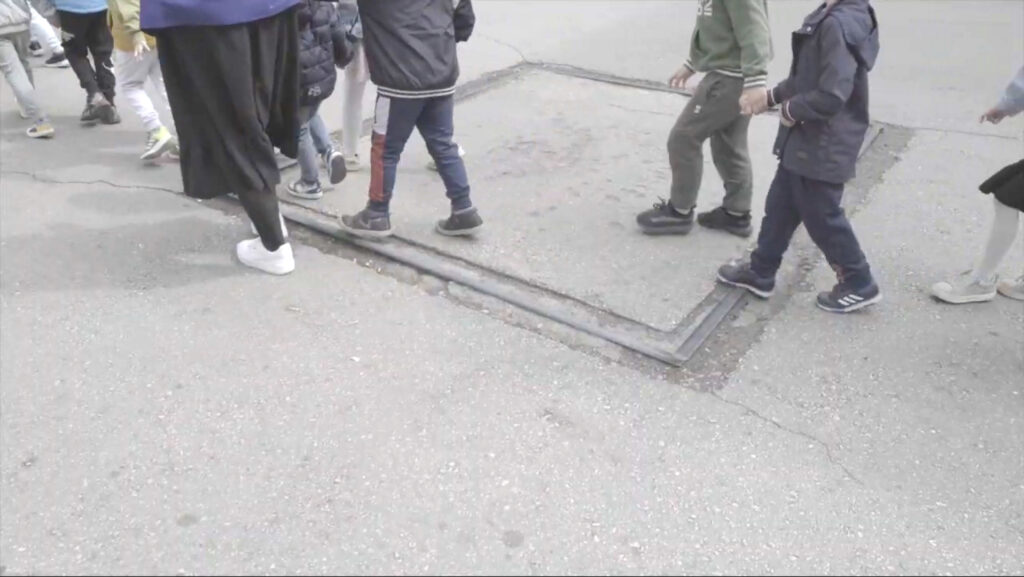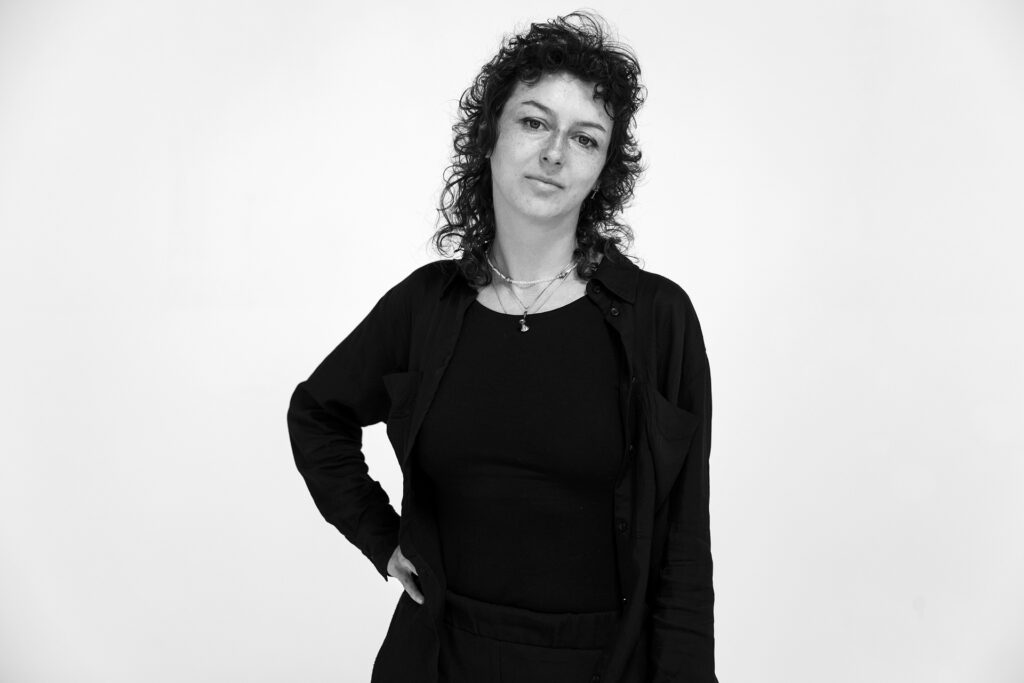
Inga Levi
Inga Levi was born and is based in Kyiv, Ukraine. She studied book illustration at Kyiv Polytechnical University (NTUU KPI), graduating from the Publishing faculty in 2011. In 2021, she graduated from the Contemporary Art program at Kyiv Academy of Media Arts, and in 2024, she completed studies at the Intermedia faculty of the Academy of Fine Arts in Gdańsk, Poland.
In 2021, Inga curated the restoration of the Kyiv Central Bus Station mosaics (1960-61, authored by A. Rybachuk and V. Melnychenko). From 2018 to 2019, she worked as a mosaicist and representative of the author V. Melnichenko on the artistic restoration of the fountain at the Kyiv Palace of Children and Youth “Stars and Constellations” (1963-65, authored by A. Rybachuk and V. Melnychenko).
Inga works with graphics and painting, and in the 2000s, she developed an interest in urban space, architecture, and monumental art. This interest is reflected in her artistic practice, which includes work with urban landscapes, mosaics, installation, and transdisciplinary art.
About the Double Exposure Series
by Inga Levi
Following the onset of full-scale war in Ukraine, I embarked on a series of drawings titled “Double Exposure.” The catalyst for this series was the distressing news of Russia’s invasion of Ukraine.
In February 2022, I was visiting Lviv, with the final destination of my journey being Kryvorivnia, a mountain village in the Verkhovyna district of the Ivano-Frankivsk region. Despite the backdrop of escalating hostilities, I decided to proceed with my plan and reach Kryvorivnia.
On my way there, I found myself immersed in news updates, spending hours on the road while grappling with the unfolding events. Even in moments without internet access, the harrowing imagery of explosions in Ukrainian cities lingered in my mind. The serene beauty of the mountains outside my bus window was overshadowed by the reality of the war, which kept intruding upon my thoughts and emotions.
It was against this backdrop that I began my artistic exploration. In my wartime series “Double Exposure,” I seek to capture the collision of two distinct narratives – the scenes I encounter along relatively safe routes, juxtaposed with the traumatic reports emanating from regions integral to my identity and sense of belonging in Ukraine.
At times, the proximity of war to my own experiences compels me to strip away layers of imagery, leaving only one narrative thread exposed. Through this artistic expression, I endeavor to navigate the complexities of wartime realities and the emotional resonance of witnessing conflict in my homeland.
About the Sarajevo Part of Double Exposure
While continuing the “Double Exposure” series in Sarajevo, the two layers of reality I depicted often multiplied into countless others or sometimes merged into a single, dense experience. Being in a city that survived a war 30 years ago felt strangely “homelike.” This feeling was deceiving in a way, as I found it harder than in the tidy, calm European cities to remind myself that our war is unfortunately far from its end.
Artist Statement about the Video
As the war continues in Ukraine, we are already contemplating ways to commemorate it. During my visit to Sarajevo, I aimed to study the traces of war and commemorative signs in the city. The short video I made during the Reporting From the Future residency is an observation of public interaction with the Sarajevo Rose, which marks the spot where a shell killed people in front of the Sacred Heart Cathedral. Now a popular tourist site, it is frequently visited by guided tour groups.
Foreign visitors often walk over the shell trace, filled with red epoxy and now covered in dust, without noticing it. In contrast, Sarajevans who survived the siege avoid stepping on it. Guides often spill water on the mark to make it visible under the dust. When water touches the mark, the red color becomes bright, resembling fresh blood. This video work reflects on the gesture of intentionally or unintentionally “actualizing” the traumatic past.
